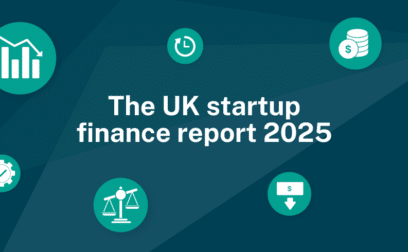Raising funds for a social enterprise is always tough – gifts and donations can be erratic and businesses and projects that lack a profit feature typically miss investor interest. Fortunately, Social Investment Tax Relief (SITR) can make life easier for those that chase the greater good. SITR is a government-backed investment scheme that provides generous tax relief for investors or lenders to a social enterprise. Since 2014, social organisations have raised £15.8 million through the scheme. Whether you’re an investor or lender seeking a worthwhile cause to back, or you’re a social enterprise working for the benefit of others, SITR can be a win-win for everyone.
What is Social Investment Tax Relief (SITR)?
Social Investment Tax Relief (SITR) is a government-backed investment scheme for social enterprises. These are businesses who mainly work for the greater good and not just to make a profit. SITR allows investors and lenders to gain generous tax breaks when they provide funds to these types of organisations – which should make it easier for these socially conscious businesses to obtain the funds they need to grow.
SITR for social enterprises
For the purposes of SITR, social enterprises are one of the following:
- community interest company
- community benefit society, with an asset lock
- charity, which can be a company or a trust.
Social enterprises can use SITR to raise funds if they are carrying out a qualifying trade, or if they are preparing to carry out a qualifying trade (which must start within two years of the investment). Funds can be either invested or loaned and organisations can raise a maximum of £1.5 million using SITR during the lifetime of the enterprise. Businesses must ensure they follow the scheme rules for at least 3 years after the investment is made. Failure to do so will see all tax relief withdrawn from their investors.
At the time of investment, organisations cannot:
- have more than £15 million in gross assets immediately before the investment is made
- have 250 or more full time equivalent employees at the time of investment
- be controlled by another company
- have more than £16 million in gross assets immediately after the investment is made.
Additionally, for 3 years after the investment is made, organisations cannot:
- be controlled by another company
- be quoted on a recognised stock exchange
- be in a partnership
- control another company that is not a qualifying subsidiary.
Register with Swoop to discover more about SITR or other ways to fund your social enterprise.
SITR for investors and lenders
Although social enterprises may only accept up to a maximum of £1.5 million in their lifetime, individual investors or lenders may invest or lend to more than one social organisation and up to a maximum of £1 million per tax year. In return for their funds, and providing they hold the shares or the loan notes for at least three years, investors or lenders may enjoy the following tax benefits:
| SITR benefits for individual investors and lenders | |
| Income Tax relief | 30% |
| Capital Gains Tax deferral | Yes |
| Capital Gains Tax Reinvestment relief | Yes |
| Inheritance Tax relief | Yes, for shares, but not for debt |
| Loss Relief against Income Tax | Yes, for shares but not for debt |
| Loss Relief against Capital Gains Tax | Yes, for shares, but only in limited cases for debt |
| Tax free dividends | No |
| Tax free sale proceeds | Yes, for shares but not for debt |
| Limits per tax year on sum invested or loaned | £1,000,000 |
| Minimum holding period for shares or loan notes | 3 years |
Corporate investors may also invest or loan funds to social enterprises up to a maximum of £1 million per tax year, but they do not qualify for SITR tax relief on their investment.
What is Advance Assurance (AA) for SITR?
Investors or lenders seeking to provide funds to a social enterprise using SITR need to know the organisation is eligible for the scheme. If it’s not, they won’t get their tax breaks. Businesses can obtain an early indication of their eligibility for SITR by seeking Advance Assurance (AA) from HMRC. (Advance Assurance will not tell the organisation if an investor is eligible for SITR).
Applications for AA can be filed by the company secretary, a director, or a trustee if the social enterprise is a charitable trust. HMRC may take up to eight weeks to provide a decision on each application.
How do I raise funding with SITR?
Organisations can raise funds using SITR by asking investors to buy new shares in the business or by asking lenders to lend funds to the organisation as new debt. All money raised must be used within 28 months of the date of investment.
The shares you issue to investors must:
- be new shares.
- be paid for in full, and in cash, at the time the investment is made.
- not be preference shares.
Any dividends your investors receive cannot be guaranteed.
If you raise funds with a loan, the amount you’re lent must:
- be for a new debt investment or loan.
- be made in cash, in a single or several payments.
- not be secured on any assets.
- not be paid back until at least 3 years after the investment.
- not have an interest rate higher than a reasonable commercial interest rate.
When you issue the shares or receive the debt investment there cannot be an arrangement:
- to guarantee the investment or protect the investor from risk.
- to sell or buy back the shares at the end of, or during the 3 years after the investment is made.
- to repay the loan during the 3 years after the investment is made.
- to structure your activities to let an investor benefit in a way that’s not intended by the scheme.
- for a reciprocal agreement where you invest back in an investor’s company to also gain tax relief
- to raise money for the purpose of tax avoidance – the investment must be for a genuine commercial reason
You cannot use the investment to pay off an existing loan.
How much can I raise with SITR?
If you are raising funds for a qualifying trade within seven years of the organisation’s first commercial sale or activity, the maximum amount of investment you can get over the lifetime of your enterprise is £1.5 million. This includes any money received by any subsidiaries, former subsidiaries, or businesses you’ve acquired. If you’re raising funds later than seven years after your first commercial sale or activity, and you have never raised funds for the organisation using SITR before, or you wish to use SITR again but to fund a new qualifying trade, you may get up to €344,827 (or the equivalent amount in pound sterling) over a three years’ period. Any investments under SITR will also count towards any limits for later investments through other venture capital schemes.
- Need more than £1.5 million? Register with Swoop to explore other ways to help your social enterprise grow.
When can I apply for SITR?
You can only apply for SITR when you’ve conducted your qualifying trade for at least 4 months. You must apply within 2 years of having conducted your qualifying trade for 4 months, or within 2 years of the end of the tax year in which the shares were issued or loan accepted, (whichever is later).
How do I apply for Social Investment Tax Relief (SITR)?
When you’ve issued your shares or debt investment, complete a compliance statement (SITR1) and send it to HMRC. Complete a separate statement for each share or debt issue.
If you’ve got Advance Assurance, provide copies of any documents that have changed since HMRC gave you Advance Assurance. If you haven’t got Advance Assurance, you’ll need to provide the following information for your social enterprise and any of its subsidiaries:
- the business plan and financial forecasts
- a copy of the latest accounts if available
- which enterprises or companies will use the investments
- details of all trading and activities to be conducted, and how much you expect to spend on each activity
- a list of the amounts, dates, and venture capital schemes under which you’ve previously received an investment
- copies of any documents you use to explain your proposal to your investors
- details of any other agreements between the enterprise and the investors
- a signed letter from one of your directors or trustees if you’re allowing an agent to act on your behalf
- the certificate of incorporation of your company or charity
- the memorandum and articles of association of your company or the equivalent governing documents of your charity, such as a trust deed
- the loan agreement or debt instrument if the investment is through qualifying debt
- any other documents to show you meet the qualifying conditions for the scheme.
You can email or post your compliance statement and supporting documents to:
Email: enterprise.centre@hmrc.gsi.gov.uk
Post: Venture Capital Reliefs Team
HM Revenue and Customs
WMBC
BX9 1BN
I’ve applied for SITR, what happens next?
If your application is successful, HMRC will send you a letter and compliance certificates (form SITR3) to give to your investors. The letter will include a unique investment reference number (UIR). You must include this on the compliance certificates you give to investors. They cannot claim tax relief without it.
If HMRC decides the investments do not meet SITR requirements, they will write to you explaining why. If you disagree, you can ask HMRC to review the decision, or lodge an appeal.
How can my organisation take advantage of SITR?
Many social organisations rely on gifts, grants, and donations to fund their operations. These paths to cash can be erratic, making planning for the future difficult. SITR lets organisations raise funds from sources that would normally be off limits or uninterested, unlocking a pool of cash to pay for all the things a social enterprise needs to do, but cannot do with traditional funding methods.
No matter if you’re an investor scouting for a worthwhile opportunity or a social enterprise seeking funds, determining if a project meets SITR rules can be complicated. Small errors can lead to rejection by HMRC. Don’t leave it to chance. Register to find out more about Social Investment Tax Relief and give your organisation or investment plan the boost it deserves.
Swoop requires writers to use primary sources to support their work. These include white papers, government data, original reporting, and interviews with industry experts. We also reference original research from other reputable publishers where appropriate.
- SITR: https://www.gov.uk/guidance/venture-capital-schemes-apply-to-use-social-investment-tax-relief#how-much-you-can-raise
- SITR statistics: https://www.gov.uk/government/statistics/enterprise-investment-scheme-seed-enterprise-investment-scheme-and-social-investment-tax-relief-may-2021/enterprise-investment-scheme-seed-enterprise-investment-scheme-and-social-investment-tax-relief-commentary-2021
- Definition of a social enterprise: https://assets.publishing.service.gov.uk/government/uploads/system/uploads/ attachment_data/file/31677/11-1400-guide-legal-forms-for-social-enterprise.pdf
- Community Interest Company (CIC): https://www.gov.uk/government/publications/community-interest-companies-business-activities
- Charity: https://www.gov.uk/charities-and-tax
- Qualifying trades: https://www.gov.uk/guidance/venture-capital-schemes-apply-to-use-social-investment-tax-relief#trades
- SITR tax benefits: https://www.getsitr.org.uk/sitr-factsheet-professional-advisers
- HMRC Advance Assurance: https://www.gov.uk/guidance/venture-capital-schemes-apply-for-advance-assurance
- HMRC: https://www.gov.uk/government/organisations/hm-revenue-customs
- Other VC investment schemes: https://www.gov.uk/guidance/venture-capital-schemes-raise-money-by-offering-tax-reliefs-to-investors
- Compliance Statement SITR1: https://public-online.hmrc.gov.uk/lc/content/xfaforms/profiles/forms.html?contentRoot=repository: ///Applications/CorporationTax/1.0/VCSSITR1&template=VCSSITR1.xdp



































 yet? Register here!
yet? Register here!